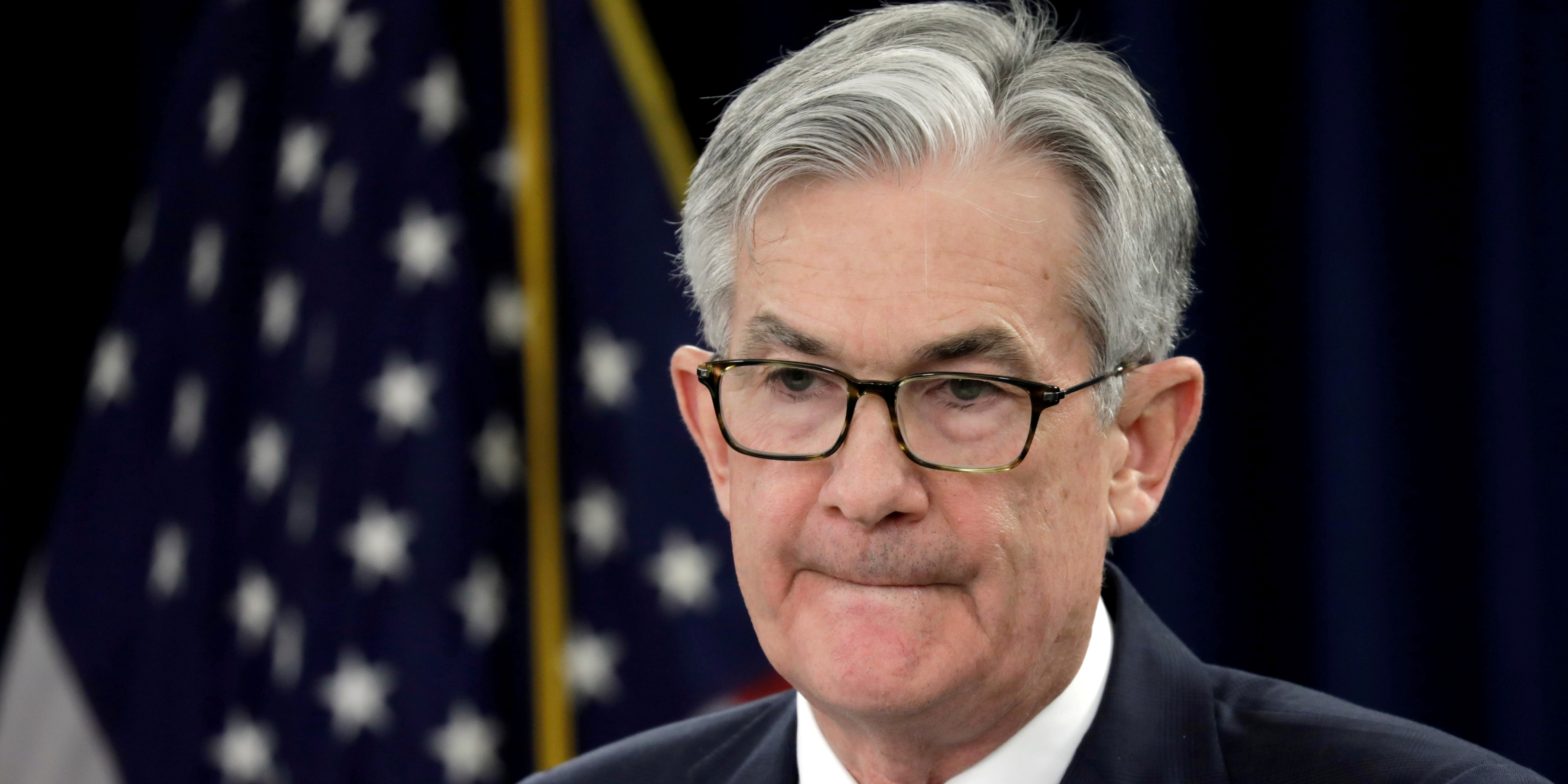Jerome Powell’s preferred bond-market gauge is on the verge of inverting. If that happens, it would signal an impending recession and a Fed pivot by the spring of 2024. The Fed chair touted the predictive power of the short end of the yield curve earlier this year. Loading Something is loading.
Thanks for signing up!
Access your favorite topics in a personalized feed while you’re on the go.
Jerome Powell’s favorite bond-market gauge is on the verge of inverting, which would signal the US economy is barreling towards a recession — and that means the Federal Reserve could pivot to cutting interest rates in a matter of months.
The spread between the yield on three-month Treasury bills and the expected yield on those bills in 18 months’ time narrowed to a mere 0.2% on Tuesday, compared with 2.7% in April, Bloomberg said.
An inverted yield curve is one where interest rates for short-term fixed-income securities are higher than those for longer-term ones. It suggests investors are doubtful about the prospects for the future, and as such is seen as a classic sign of a looming economic recession.
“Frankly, there’s good research by staff in the Federal Reserve system that really says to look at the short — the first 18 months — of the yield curve,” Powell said in March.
“That’s really what has 100% of the explanatory power of the yield curve. It makes sense. Because if it’s inverted, that means the Fed’s going to cut, which means the economy is weak,” he said.
The Fed chair’s point was that if three-month bond yields today are higher than where investors expect them to be in 18 months, that suggests the US central bank will reduce interest rates between now and then. If the market anticipates rates will be cut in that short a timeframe, the economy is likely at high risk of recession.
Powell and his colleagues have hiked rates from virtually zero in March to a range of 3% to 3.25% this year. Their goal is to curb inflation, which spiked to a 40-year high of 9.1% in June, and remained above 8% in September.
However, investors worry higher rates will weaken consumer spending and investment, and make US exports less competitive by strengthening the dollar, paving the way for a painful recession. The Fed is expected to announce yet another mega-hike of 75 basis points at the end of its October meeting Thursday, which could invert Powell’s favorite yield curve.
If that happens, it would fuel recession fears among investors. On the bright side, they might welcome the promise of a Fed pivot by the spring of 2024, given rate hikes have weighed on the prices of stocks, bonds, cryptocurrencies, real estate, and other assets this year.
Read more: Jeremy Grantham’s firm says it’s time to buy into small cap stocks. Here are the themes and companies GMO is most bullish on.
